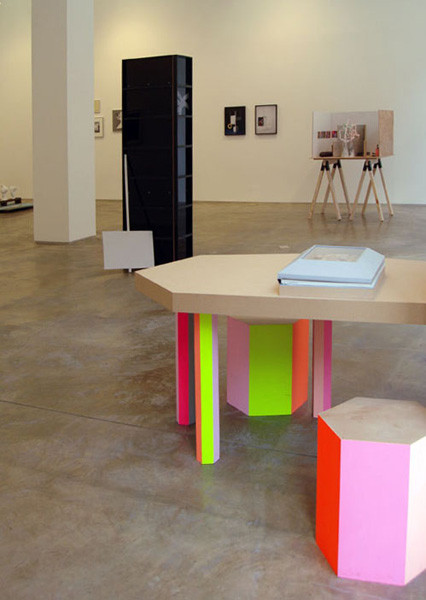The Line of Time, and The Plane of Now
31 May - 30 Jun 2007
The Line of Time, and The Plane of Now
Harris Lieberman and Wallspace are pleased to present The Line of Time, and The Plane of Now, a group exhibition occurring simultaneously at both locations. The third part of the exhibition will occur in a limited edition artist book, on view at both galleries
.
Organized by Jacob Dyrenforth, Ohad Meromi and Halsey Rodman, the exhibition takes its title from the 1974 song “Eternal Life” by Shira Small, and maps the constellation-like dialogues between artists working with a related set of ideas about narrative, emphasizing poetic, rather than didactic, juxtapositions between works.
The works included in The Line of Time, and The Plane of Now explore ideas of character development, history, science fiction, politics, and psychology through various approaches to object-making. The artists in the exhibition exemplify a more literary approach in their work, alluding to broad stories in complex ways, rather than producing dioramas or storyboards. Choosing narrative as an entry point for their work rather than the history of a medium (painting, photography, etc.), they have defined their artistic practices in open and inclusive ways. The scope of a narrative becomes a container large enough to hold their wide and varied practices.
Harris Lieberman and Wallspace are pleased to present The Line of Time, and The Plane of Now, a group exhibition occurring simultaneously at both locations. The third part of the exhibition will occur in a limited edition artist book, on view at both galleries
.
Organized by Jacob Dyrenforth, Ohad Meromi and Halsey Rodman, the exhibition takes its title from the 1974 song “Eternal Life” by Shira Small, and maps the constellation-like dialogues between artists working with a related set of ideas about narrative, emphasizing poetic, rather than didactic, juxtapositions between works.
The works included in The Line of Time, and The Plane of Now explore ideas of character development, history, science fiction, politics, and psychology through various approaches to object-making. The artists in the exhibition exemplify a more literary approach in their work, alluding to broad stories in complex ways, rather than producing dioramas or storyboards. Choosing narrative as an entry point for their work rather than the history of a medium (painting, photography, etc.), they have defined their artistic practices in open and inclusive ways. The scope of a narrative becomes a container large enough to hold their wide and varied practices.

